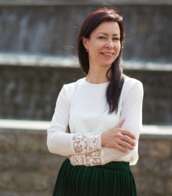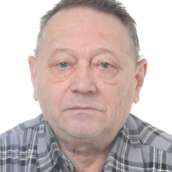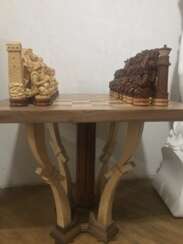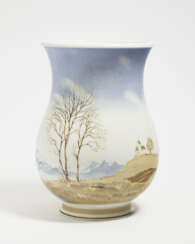зика



















Rudolf Sieck was a German landscape painter and illustrator.
He studied at the Munich School of Applied Arts, making landscape and architectural drawings. Sieck collaborated with the magazine "Jugend", and also illustrated editions of works by Guy de Maupassant, Emile Zola and other classics. In 1906 Rudolf Sieck worked as a designer for the Nymphenburg porcelain factory, and in 1913 he moved to Pinswang near Prin and became a member of the Die Welle artists' association. Here numerous landscape paintings were created, mostly in a colorful graphic style.
Rudolf Sieck was a member of the Association of German Artists, a member of the New Munich Secession from 1914 and participated in the exhibitions of the Glass Palace. From 1937 to 1941, some of Sieck's landscape paintings were purchased by the highest members of the German government at art exhibitions in Munich.


Rudolf Sieck was a German landscape painter and illustrator.
He studied at the Munich School of Applied Arts, making landscape and architectural drawings. Sieck collaborated with the magazine "Jugend", and also illustrated editions of works by Guy de Maupassant, Emile Zola and other classics. In 1906 Rudolf Sieck worked as a designer for the Nymphenburg porcelain factory, and in 1913 he moved to Pinswang near Prin and became a member of the Die Welle artists' association. Here numerous landscape paintings were created, mostly in a colorful graphic style.
Rudolf Sieck was a member of the Association of German Artists, a member of the New Munich Secession from 1914 and participated in the exhibitions of the Glass Palace. From 1937 to 1941, some of Sieck's landscape paintings were purchased by the highest members of the German government at art exhibitions in Munich.


Rudolf Sieck was a German landscape painter and illustrator.
He studied at the Munich School of Applied Arts, making landscape and architectural drawings. Sieck collaborated with the magazine "Jugend", and also illustrated editions of works by Guy de Maupassant, Emile Zola and other classics. In 1906 Rudolf Sieck worked as a designer for the Nymphenburg porcelain factory, and in 1913 he moved to Pinswang near Prin and became a member of the Die Welle artists' association. Here numerous landscape paintings were created, mostly in a colorful graphic style.
Rudolf Sieck was a member of the Association of German Artists, a member of the New Munich Secession from 1914 and participated in the exhibitions of the Glass Palace. From 1937 to 1941, some of Sieck's landscape paintings were purchased by the highest members of the German government at art exhibitions in Munich.


Rudolf Sieck was a German landscape painter and illustrator.
He studied at the Munich School of Applied Arts, making landscape and architectural drawings. Sieck collaborated with the magazine "Jugend", and also illustrated editions of works by Guy de Maupassant, Emile Zola and other classics. In 1906 Rudolf Sieck worked as a designer for the Nymphenburg porcelain factory, and in 1913 he moved to Pinswang near Prin and became a member of the Die Welle artists' association. Here numerous landscape paintings were created, mostly in a colorful graphic style.
Rudolf Sieck was a member of the Association of German Artists, a member of the New Munich Secession from 1914 and participated in the exhibitions of the Glass Palace. From 1937 to 1941, some of Sieck's landscape paintings were purchased by the highest members of the German government at art exhibitions in Munich.


Rudolf Sieck was a German landscape painter and illustrator.
He studied at the Munich School of Applied Arts, making landscape and architectural drawings. Sieck collaborated with the magazine "Jugend", and also illustrated editions of works by Guy de Maupassant, Emile Zola and other classics. In 1906 Rudolf Sieck worked as a designer for the Nymphenburg porcelain factory, and in 1913 he moved to Pinswang near Prin and became a member of the Die Welle artists' association. Here numerous landscape paintings were created, mostly in a colorful graphic style.
Rudolf Sieck was a member of the Association of German Artists, a member of the New Munich Secession from 1914 and participated in the exhibitions of the Glass Palace. From 1937 to 1941, some of Sieck's landscape paintings were purchased by the highest members of the German government at art exhibitions in Munich.


Johann Zick was a German painter of frescoes in southern Germany and active during the Baroque period. He was the father of painter Januarius Zick and considered to be an important master of the Late Baroque.


Rudolf Sieck was a German landscape painter and illustrator.
He studied at the Munich School of Applied Arts, making landscape and architectural drawings. Sieck collaborated with the magazine "Jugend", and also illustrated editions of works by Guy de Maupassant, Emile Zola and other classics. In 1906 Rudolf Sieck worked as a designer for the Nymphenburg porcelain factory, and in 1913 he moved to Pinswang near Prin and became a member of the Die Welle artists' association. Here numerous landscape paintings were created, mostly in a colorful graphic style.
Rudolf Sieck was a member of the Association of German Artists, a member of the New Munich Secession from 1914 and participated in the exhibitions of the Glass Palace. From 1937 to 1941, some of Sieck's landscape paintings were purchased by the highest members of the German government at art exhibitions in Munich.



































































